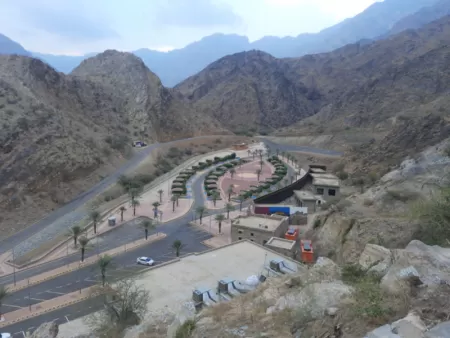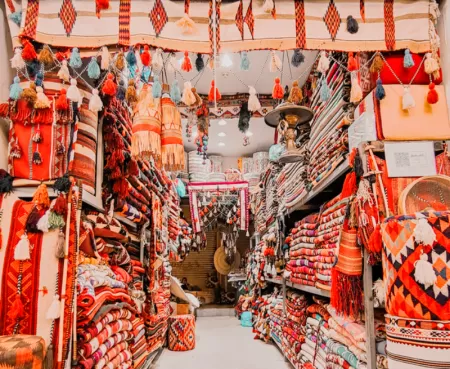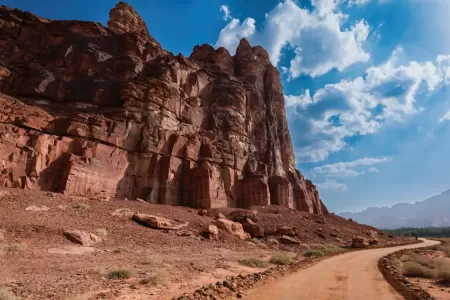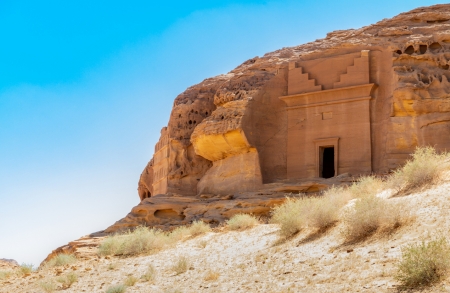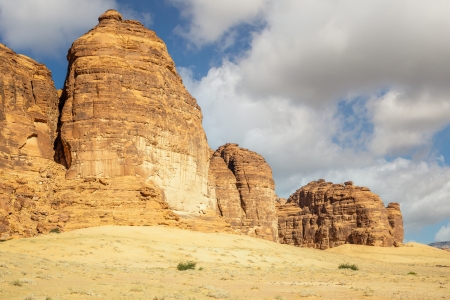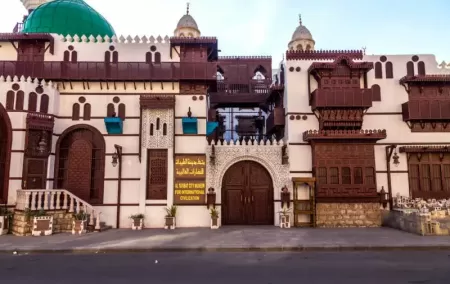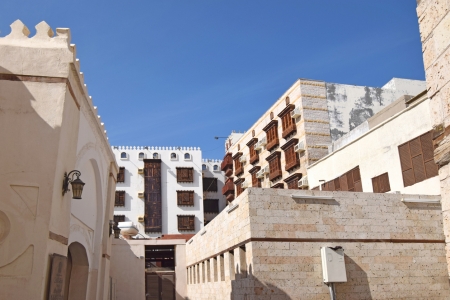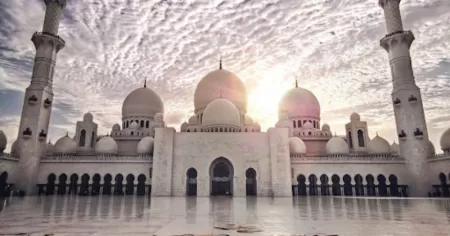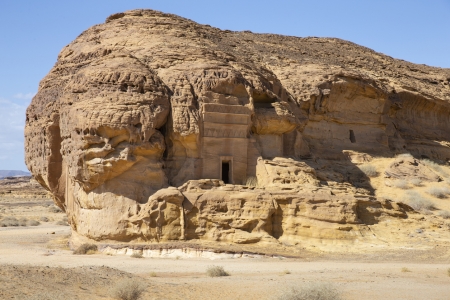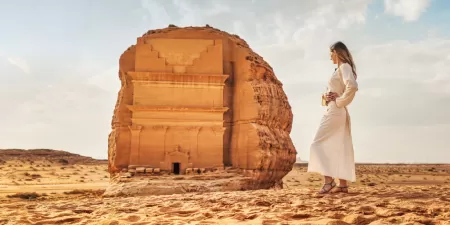Exploring the Marvels of Jabal Al-Banat: A Historical Gem in Saudi Arabia
Explore Jabal Al-Banat in Al Ula, Saudi Arabia, a UNESCO World Heritage site with 29 carved Nabataean tombs from the 4th century BCE. Known as the "Mountain of the Daughters," it highlights the artistry and culture of the Nabataean Kingdom along ancient trade routes. Discover its unique architecture, symbolic carvings, and visiting tips—a must for history and culture enthusiasts!
 (1).webp)
Located in the enchanting landscapes of Al Ula, Jabal Al-Banat stands as a testament to the rich historical tapestry of Saudi Arabia. This remarkable site is home to one of the most significant clusters of tombs in Hegra, featuring 29 intricately carved facades that show the artistry and architectural skillfulness of ancient civilizations. Some say it was named after ancient heroines, while others believe it holds hidden treasures. Whether you're a history buff, an adventure seeker, or a cultural explorer, this destination deserves a spot on your **tours to Saudi Arabia** itinerary. With Saudi Arabia trips becoming more diverse, travelers are craving experiences beyond the usual. Jabal Al-Banat delivers just that—raw beauty, interesting stories, and breathtaking views. This guide dives deep into its history, significance, and how to make the most of your visit. Ready to explore? Let’s uncover the secrets of this captivating mountain.
The Historical Significance of Jabal Al-Banat
A Glimpse into the Past
Jabal Al-Banat, translating to "Mountain of the Daughters," is a significant archaeological site that dates back to the Nabataean Kingdom, flourishing between the 4th century BCE and the 2nd century CE. The Nabataeans were famous for their advanced engineering skills and their ability to grow in desert environments. This site reflects their advanced burial practices and deep cultural beliefs surrounding death and the afterlife.
The Nabataean Kingdom
The Nabataean Kingdom was a major trading center, strategically located along the incense trade routes connecting the Arabian Peninsula with the Mediterranean. This position allowed the Nabataeans to collect wealth and influence, which is evident in the architectural grandeur of their tombs. Jabal Al-Banat is a main example of their elaborate funerary architecture, showing their reverence for the deceased through sophisticated designs and monumental structures.
Cultural Significance
The tombs at Jabal Al-Banat are not just burial sites; they are cultural landmarks that provide insights into the social and religious practices of the Nabataeans. The detailed carvings and inscriptions found on the facades offer precious information about their beliefs, customs, and the significance of family lineage in their society.
Architectural Features of Jabal Al-Banat
Intricate Carvings and Facades
The 29 tombs of Jabal Al-Banat are decorated with skillfully crafted facades that show a variety of architectural styles. Each tomb is unique, featuring special designs that reflect the status and identity of the individuals buried within. The craftsmanship is an example of the artistic abilities of the Nabataeans, who combined local materials with advanced techniques to create enduring monuments.
Material and Design
Constructed primarily from sandstone, the tombs show a harmonious mix of natural beauty and human skill. The soft texture of the sandstone allowed for detailed carvings, while the natural colors of the rock added to the aesthetic appeal. The facades often include decorative elements such as columns, friezes, and niches, boosting their visual impact.
Symbolism in Architecture
The architectural elements of Jabal Al-Banat are rich in symbolism. The designs often incorporate motifs that represent life, death, and the afterlife, reflecting the Nabataeans' beliefs about existence beyond the grave. This interplay of architecture and symbolism makes Jabal Al-Banat an attractive study for historians and archaeologists alike.
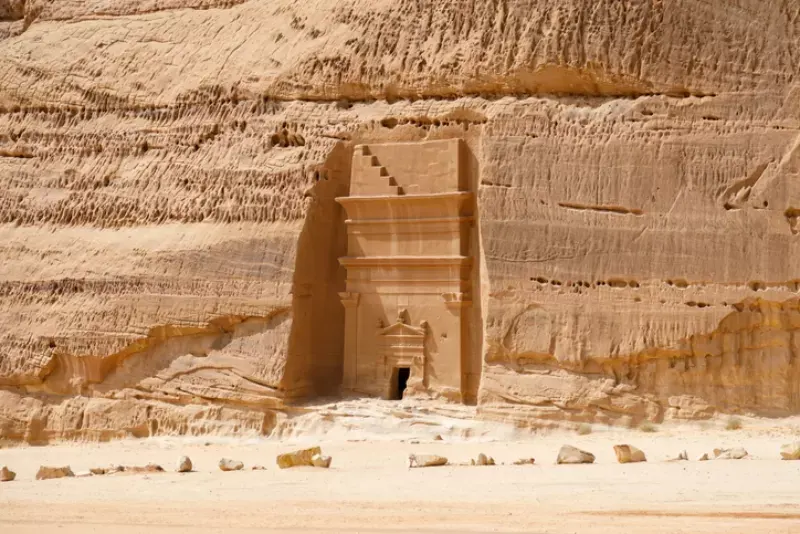
The Archaeological Discoveries at Jabal Al-Banat
Excavation Efforts
Archaeological diggings at Jabal Al-Banat have unveiled a wealth of artifacts and information about the Nabataean civilization. These efforts, led by several international teams, have contributed significantly to our understanding of the region's history and the cultural practices of its ancient residents.
Artifacts and Findings
Among the discoveries at Jabal Al-Banat are pottery shards, tools, and inscriptions that give insights into the daily lives of the Nabataeans. These artifacts expose details about their trade practices, dietary habits, and social structures, painting an alive picture of life during the height of the Nabataean Kingdom.
Preservation Efforts
keeping the integrity of Jabal Al-Banat is a priority for local authorities and international organizations. Efforts are underway to protect the site from environmental degradation and human impact, ensuring that future generations can appreciate its historical importance.
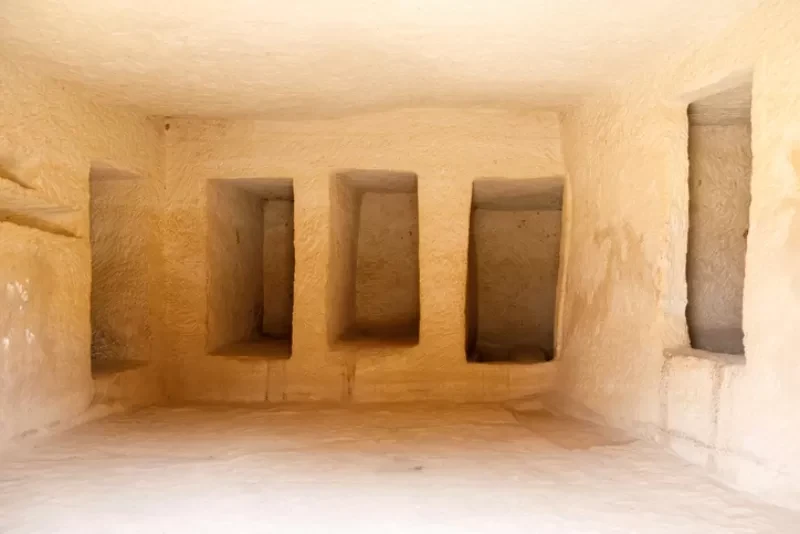
Visiting Jabal Al-Banat: A Traveler's Guide
Getting There
Reaching Jabal Al-Banat is an adventure in itself. Located approximately 22 kilometers from Al Ula, visitors can access the site via guided tours or private transportation. The journey through the amazing desert landscape offers breathtaking views and a hint of the region's natural beauty. Access to the site may require permits, so coordinating with local tour operators can ensure a seamless experience. Additionally, respecting the site's cultural and historical significance by adhering to guidelines helps preserve its integrity for future generations.
Best Time to Visit
The ideal time to explore Jabal Al-Banat is during the cooler months, from October to March. The mild temperatures make for a comfortable visit, allowing travelers to fully immerse themselves in the site's historical ambiance.
What to Expect
Visitors to Jabal Al-Banat can expect a wonderful experience as they walk among the tombs and admire the intricate carvings. Guided tours often include detailed explanations of the site's history and importance, enhancing the overall experience.
Cultural Context and Modern Significance
The Role of Jabal Al-Banat in Saudi Culture
Jabal Al-Banat has a prominent place in Saudi Arabia's cultural heritage. It is a reminder of the country's rich history and the contributions of past civilizations to its identity. The site is often featured in educational programs and cultural initiatives aimed at enhancing awareness of Saudi Arabia's archaeological treasures.
UNESCO World Heritage Site
In admission of its historical and cultural significance, Jabal Al-Banat, along with the broader archaeological site of Hegra, was designated a UNESCO World Heritage Site in 2008. This status highlights the importance of preserving such sites for future generations and encourages sustainable tourism practices.
Contemporary Tourism
With the rise of tourism in Saudi Arabia, Jabal Al-Banat has become a focal point for travelers seeking to explore the country's ancient heritage. The site's unique shows, combined with the attraction of Al Ula's stunning landscapes, make it a must-visit destination for those embarking on Saudi Arabia tours.
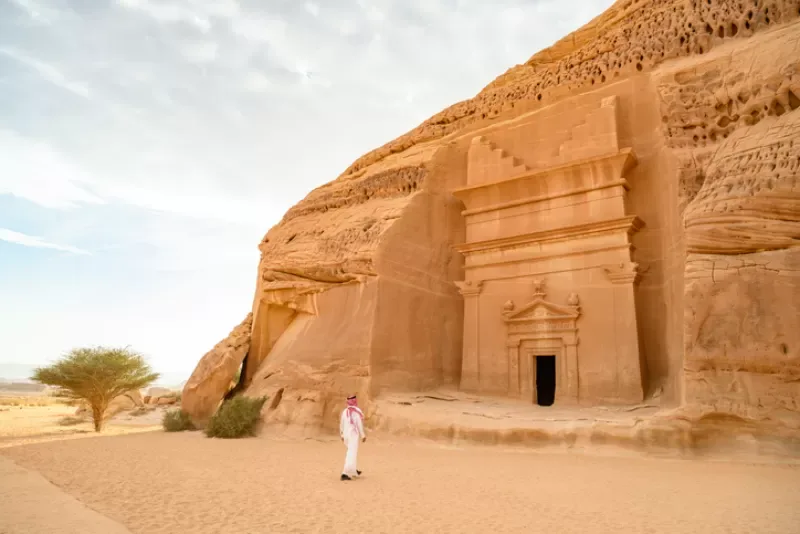
Customize Your Dream Vacation!
Get in touch with our local experts for an unforgettable journey.
Plan Your TripThe Mystique of the Nabataeans
Understanding Nabataean Society
The Nabataeans were a complex society with a rich cultural heritage. Their ability to adapt to the harsh desert environment and flourish as traders is a testament to their ingenuity. Understanding their societal structure, trade practices, and religious beliefs gives valuable context for appreciating the importance of Jabal Al-Banat.
Religious Beliefs and Practices
The Nabataeans practiced a polytheistic religion, worshipping different deities associated with nature and the afterlife. Their beliefs affect their burial practices, as proved by the elaborate tombs at Jabal Al-Banat. The site offers a glimpse into their spiritual world and the importance they placed on honoring their ancestors.
Influence on Modern Culture
The heritage of the Nabataeans continues to resonate in modern Saudi culture. Their contributions to architecture, trade, and social organization are celebrated as part of the nation's rich history. Jabal Al-Banat serves as a reminder of this enduring impact, inviting modern audiences to connect with their past.
Conservation Challenges
Environmental Factors
The preservation of Jabal Al-Banat faces several challenges, especially from environmental factors such as erosion and climate change. The region's tough desert conditions can lead to the deterioration of sandstone structures, necessitating ongoing conservation efforts.
Human Impact
Increasing tourism poses another challenge to the site's protection. While tourism can provide economic benefits, it also risks damaging fragile archaeological sites. Balancing the need for visitor access with the imperative of preservation is a critical concern for authorities managing Jabal Al-Banat.
Future Conservation Efforts
To ensure the longevity of Jabal Al-Banat, collaborative efforts between local authorities, international organizations, and conservationists are important. These initiatives aim to implement sustainable tourism practices, increase awareness about the site's significance, and develop strategies for long-term preservation.
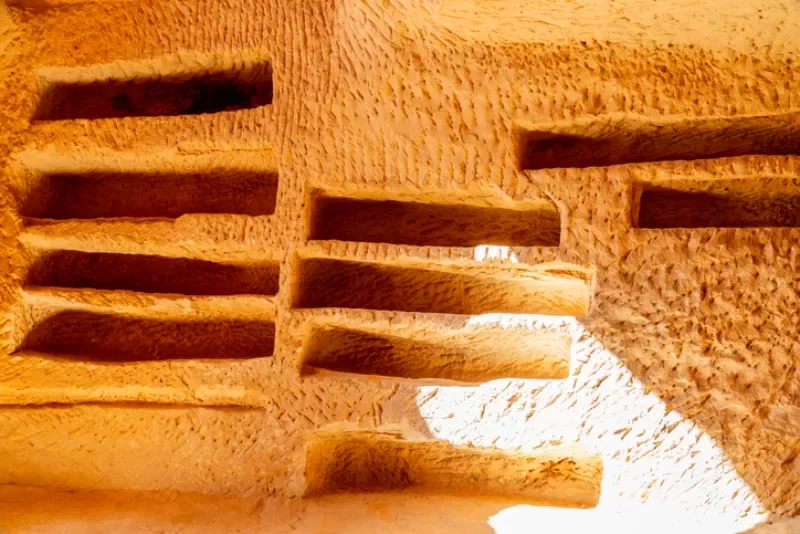
Jabal Al-Banat in Popular Culture
Representation in Media
Jabal Al-Banat has captured the imagination of artists, writers, and filmmakers, becoming a symbol of Saudi Arabia's rich cultural heritage. Its amazing landscapes and historical importance have inspired various forms of artistic expression, contributing to its attraction as a cultural landmark.
Educational Initiatives
Educational programs aimed at enhancing awareness of Jabal Al-Banat and its historical context are increasingly popular. Schools and universities often incorporate the site into their curriculum, fostering a sense of pride and connection to Saudi Arabia's heritage among younger generations.
Community Engagement
Local communities are actively preserving and promoting Jabal Al-Banat. Initiatives that encourage community participation in tourism and conservation efforts help strengthen the connection between residents and their cultural heritage.
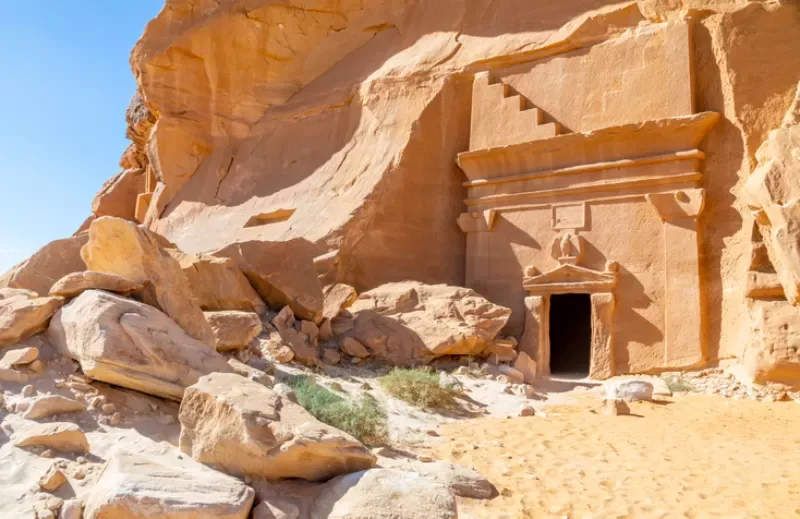
Conclusion
Jabal Al-Banat stands as a remarkable testament to the ingenuity and artistry of the Nabataeans. Its intricate tombs and rich historical context offer a unique hint into the past, inviting travelers to explore the wonders of Saudi Arabia. As you embark on your journey through this fascinating site, you'll not only appreciate its architectural beauty but also gain a deeper understanding of the cultural heritage that shapes modern Saudi Arabia. Whether you are on Saudi Arabia tours or planning your own trips to Saudi Arabia, a visit to Jabal Al-Banat is sure to be a highlight of your adventure.
This article has been structured to provide a comprehensive overview of Jabal Al-Banat while integrating the specified keywords naturally. Each section is designed to enhance readability and engagement, ensuring a rich and informative experience for the reader. If you require further adjustments or additional sections, feel free to let me know!
FAQ'S
1- What is the significance of Jabal Al-Banat in Saudi Arabia's history?
Jabal Al-Banat is a prominent archaeological site in Saudi Arabia, featuring 29 Nabataean tombs with intricately carved facades. It offers valuable insights into the ancient Nabataean civilization and their architectural achievements.
2- How can I include Jabal Al-Banat in my Saudi Arabia tour itinerary?
To visit Jabal Al-Banat, consider booking a tour with operators specializing in Saudi Arabia trips. They can arrange the necessary permits and provide guided tours to enhance your experience.
3- What other attractions are near Jabal Al-Banat in AlUla?
AlUla is home to several notable sites, including the ancient city of Hegra, Elephant Rock, and Jabal Ithlib. These attractions offer a comprehensive understanding of the region's historical and natural significance.
4- When is the best time to plan a trip to Jabal Al-Banat?
The optimal time to visit Jabal Al-Banat is between October and April when the weather is cooler and more suitable for exploring outdoor archaeological sites.
5- Are there any guidelines to follow when visiting Jabal Al-Banat?
Visitors should respect the site's cultural heritage by not touching or defacing the carvings, following designated paths, and adhering to any regulations set by local authorities or tour guides.
6- Is Jabal Al-Banat suitable for family trips?
Yes, but hiking trails may be challenging for young children. Opt for viewpoints instead.
7- What should I pack for a trip to Jabal Al-Banat?
- Sturdy hiking shoes
- Sun protection (hat, sunscreen)
- Plenty of water
8- Can I camp near Jabal Al-Banat?
Yes, but ensure you have local permissions and safety gear.




